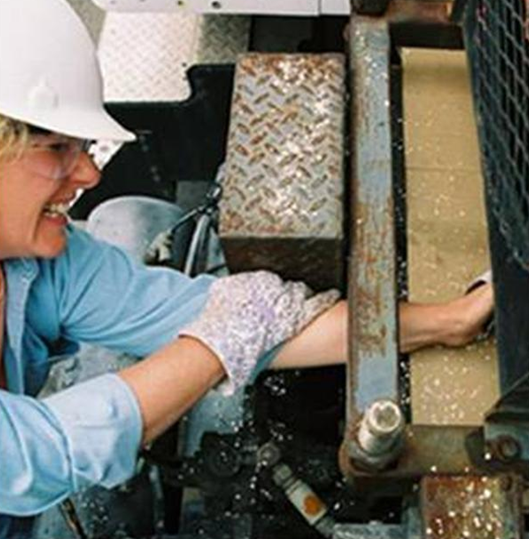Spot The Safety Violation: Watch Where You Stick Your Hands
What safety measures might have prevented this worker from ending up in such obvious pain’

A key safety measure, particularly in a manufacturing environment, is the guarding of machinery and equipment to protect workers from coming into contact with pinch-points, energized parts and other hazards.
The worker in this picture clearly stuck her hand where it didn’t belong. An adequate machine guard would’ve prevented her from doing so. Fortunately, it doesn’t appear that she suffered serious injuries. But other workers caught in machinery haven’t fared to well:
- In Manitoba, three fingers on a worker’s left hand were severed when a punch press machine top plate activated and pressed down on his fingers. The company pleaded guilty to a guarding violation and was fined $60,050 [Cadorath Plating Co. Ltd., Govt. News Release, July 18, 2012].
- In Saskatchewan, a steel plant worker was seriously injured when he got entangled in the motor drive shaft of a crane hoist. The company pleaded guilty to a guarding violation and was fined $60,000 [Evraz Regina Steel, Govt. News Release, April 4, 2012].
- In Ontario, an engineering consultant at a plant got his arm caught between two rollers and was severely injured. His employer was fined $80,000 for an OHS violation [Imasar Engineering Inc., Govt. News Release, Dec. 22, 2010].
TAKE 4 STEPS TO PROTECT WORKERS USING MACHINERY
The OHS regulations across Canada all require employers to protect workers from the safety hazards posed by the machinery and equipment they operate, including by installing guards. Although the specific requirements vary by jurisdiction, you should generally take the following steps to comply with those requirements:
1. Determine whether machinery needs guards. You should first conduct a hazard assessment to determine if any machinery in your workplace requires guards. The OHS regulations generally require guards if workers using or working near that machinery could be exposed to hazards such as moving parts, pinch-points, open flames or energized electrical cables or components.
2. Install appropriate guards. If you determine that guards are required, make sure to install appropriate ones, that is, guards that effectively protect workers from the identified hazards or dangerous areas of machinery. In addition, guards shouldn’t create safety hazards or make workers’ jobs harder or awkward to do. (Use this checklist to ensure your guards comply with the OHS regulations.)
3. Train workers on machine guards. It’s important to train workers on machine guards, including their purpose and how they work. Make sure that workers understand that they shouldn’t alter, tamper with or remove machine guards unless necessary to make a repair or do routine maintenance. And in that case, workers must follow safe work procedures while the guard is disabled, such as locking out the machinery.
4. Properly maintain guards. Guards are only effective if they’re in good condition. So make sure that guards are properly maintained and repaired when necessary.